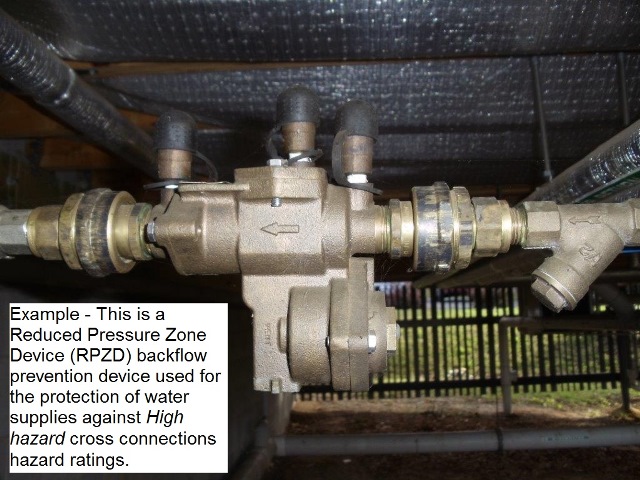 The water supply system is designed to ensure your property is supplied with drinking water under pressure. If there is a drop in the supply pressure, there is a risk that water could flow backwards into the water main. The water flowing back to the water mains could contain contaminates, foreign matter, or debris. This usually occurs when there is cross-connection between drinking and non-drinking water sources. The contaminated water can then come out of the mains supply at another location, with the potential to cause harm.
The water supply system is designed to ensure your property is supplied with drinking water under pressure. If there is a drop in the supply pressure, there is a risk that water could flow backwards into the water main. The water flowing back to the water mains could contain contaminates, foreign matter, or debris. This usually occurs when there is cross-connection between drinking and non-drinking water sources. The contaminated water can then come out of the mains supply at another location, with the potential to cause harm.
Events leading to backflow
- Water main pressure is reduced
Loss of pressure in the water supply could be as a result of:
- A break in the water main
- Mains water being used during fire fighting
- A customer is using water at a higher pressure than that within the water mains
- Constant back pressure caused by an outlet being higher than the water main.
- A cross-connection between drinking and non-drinking water exists
Cross-connection between the water supply and a contaminated source could create a vacuum and therefore draw contaminated liquid back into the water supply. Some types of properties that pose a risk to the water supply are:
- Chemical plants/ paint manufacturers and users
- Light and heavy industry
- Medical/ Dental/ Veterinary surgeries
- Laundries
- Nurseries/ market gardens
- Golf courses/ sporting ovals/ caravan parks
- Pest controllers
- Greywater treatment systems – both domestic and commercial
- Residential properties with rainwater storage plumbed into the house
- Liquid metals/ chemicals/ waste/ debris enter drinking water supply by either back-siphonage or back pressure
Examples of how back-siphonage and back-pressure can occur:
- Back-siphonage can occur when an inlet (e.g. shower hose) is submerged in bath water and the water is 'sucked' into the mains supply due to a reduction in mains pressure. This would contaminate outlets in the house such as kitchen taps. This siphonage could also occur with an inlet being submerged in chemical containers, with the resulting siphonage contaminating the drinking water supply.
- Back-pressure occurs when the pressure within plant on a property exceeds that of the water supply mains. For example, a boiler that is chemically treated and has a higher discharge pressure than the mains supply can "force" the water back into the drinking water supply, contaminating it with chemicals.
- Another property uses the drinking water supply.
After a backflow incident occurs, dangerous contaminants may remain in the drinking water supply. This contaminated drinking water will flow to neighbouring properties when used for household purposes (such as drinking, showering, and washing) and has the potential to endanger health or to cause death.